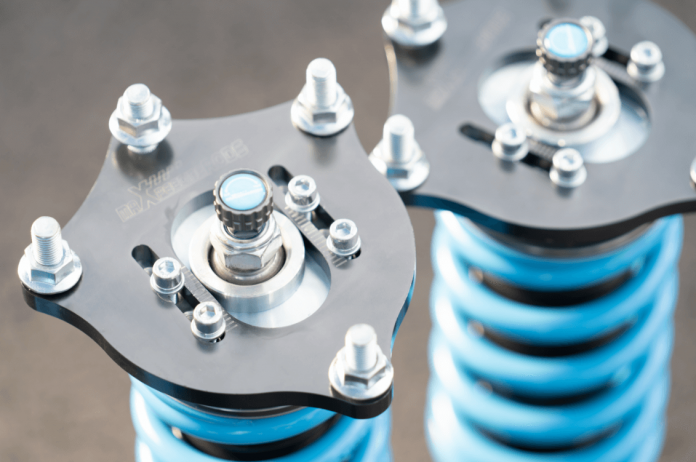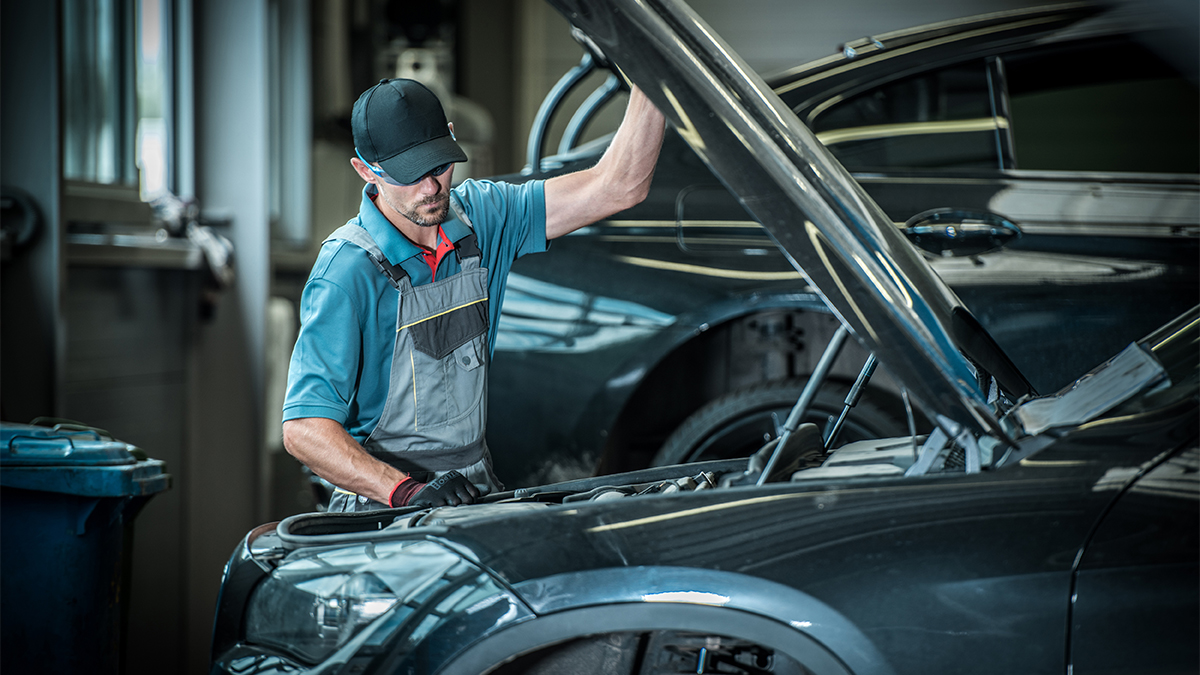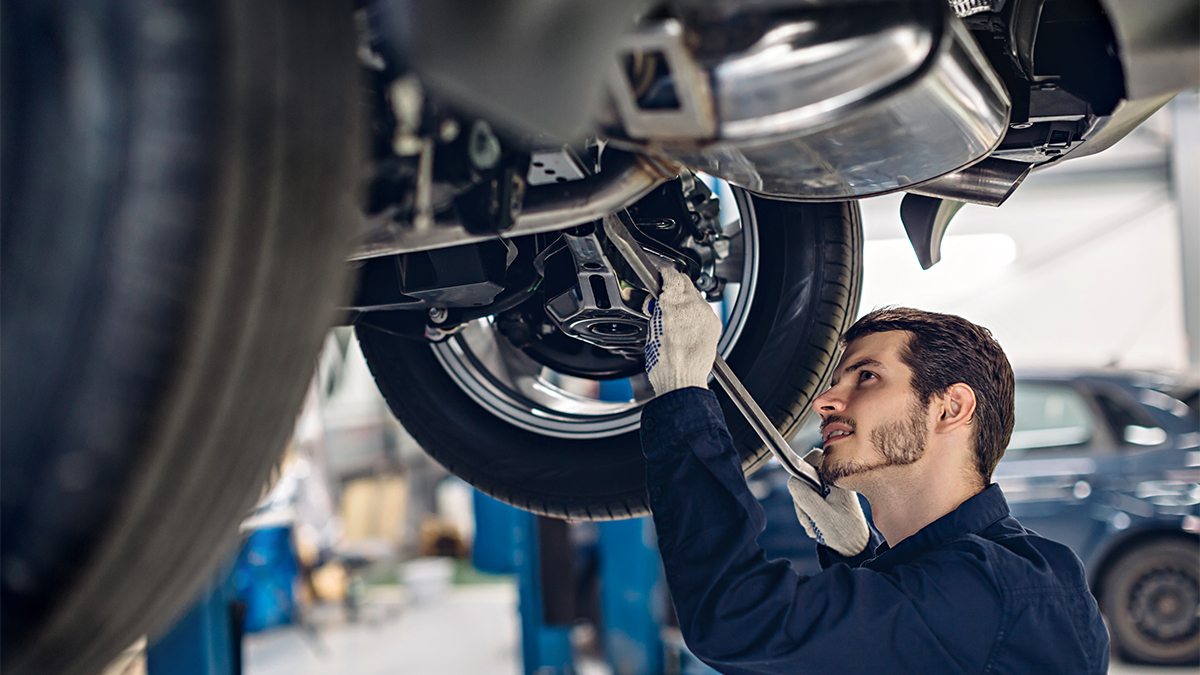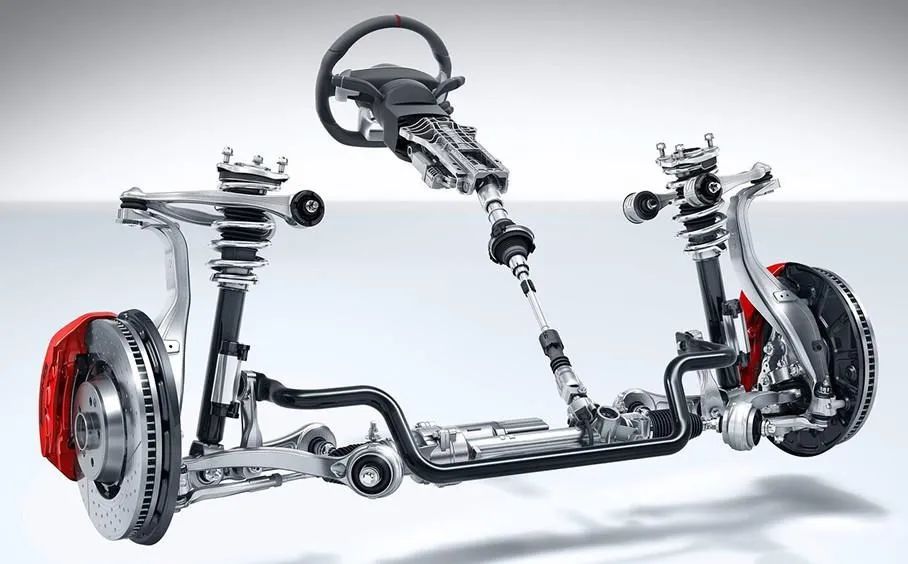When you want to improve your car’s suspension system, there are many aftermarket upgrades available, such as airbag kits, adjustable coilovers and lowering springs. However, if you really want to improve your car’s handling, especially high-speed handling and cornering capability you should consider coilovers.
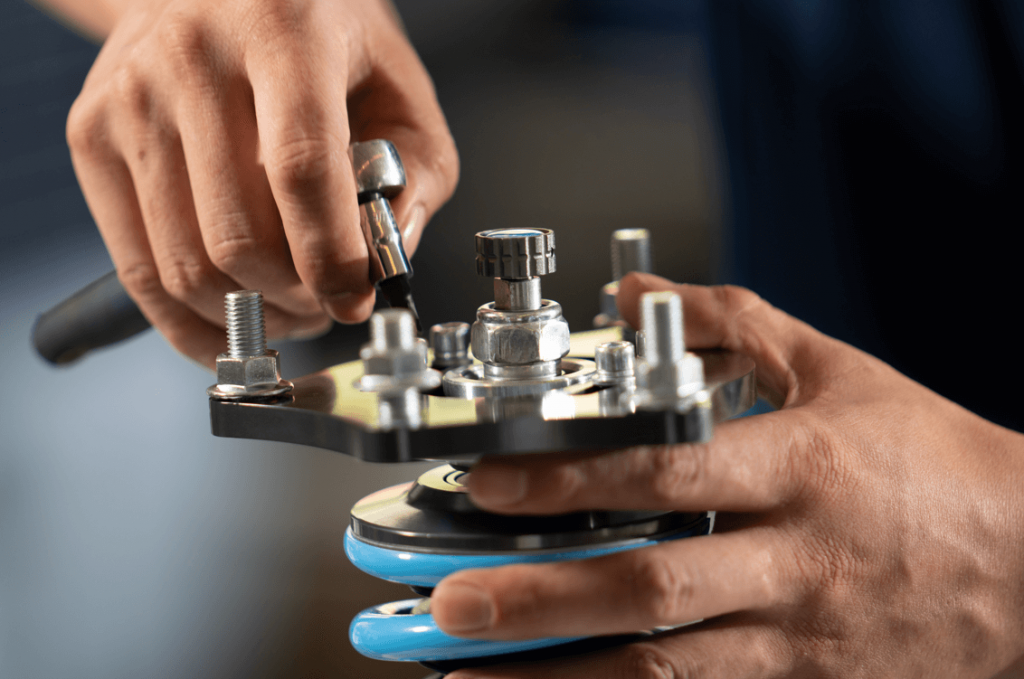
What are the signs that my vehicle needs new shocks or struts?
If you’re wondering whether your vehicle needs to have the shocks or struts replaced, pay attention to the following 6 signs:
1. Bumpy ride
The most obvious sign of a problem with your shocks or struts is that your car is giving you a much more uncomfortable ride than normal. You’ll feel bumps more, so the ride will feel rough. If you feel like you’re about to lose control of your car when you drive over a bump or pothole, it’s likely your shocks or struts need to be checked out.
2. Steering problems
Another telltale sign of a shock or strut problem is difficulty steering. Your steering wheel may feel stiff or hard to turn. And you may feel like your car is swaying or leaning when you take a turn or switch lanes.
3. Braking problems
Because struts are a structural part of your vehicle, faulty struts can result in other problems beyond just suspension issues. You may notice that your car feels unstable, takes a nose dive or lurches forward when you brake.
4. Fluid leaks
You may notice visible wear and tear to struts if you know where to look. But the most common visual clue that your shocks or struts may need repair is a fluid leak.
5. Unusual tire tread wear
When your suspension or wheel alignment is off, your tires will experience uneven tread wear, and it will usually look different than when your tires are just aging. Suspension damage can cause scalloped dips (“cups”) to develop around the edge of the tread. And this problem is very dangerous. If you notice any such signs on your tires, see a mechanic right away.
6. Mileage
Cars need regular replacement of shocks or struts every 50,000 miles or so, depending on your car’s make and model. Have your mechanic make a routine check of the shocks or struts every 50,000 miles, or how often your operating manual recommends it.
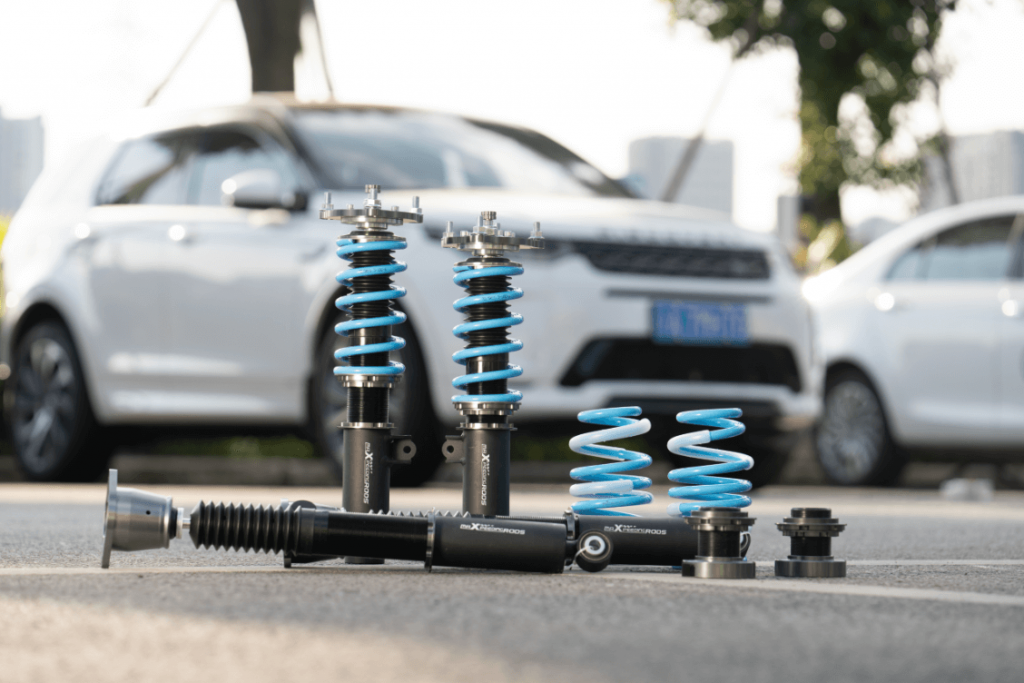
How to choose the right coilovers?
If you’re looking to replace a worn suspension, improve your car’s handling, or just slam it to the ground, coilovers are a must-have. There are several different brands, styles, and types out there, and we are asked daily which kit is the best route to go for.
Which setup you choose is really more about what you plan to do with the car. The most expensive kit is not always going to be the best option. There are a few things to keep in mind while shopping.
Upper Mounts: Rubber vs Pillow-Ball vs OEM
Most coilovers on the market will use a pillow-ball upper mount. This means a spherical bearing is used as the joint between the strut assembly and the top-hat, where it mounts to the car. A pillow-ball will produce sharper, more precise handling, but it will also transmit vibration and harshness through the suspension more easily, producing a harsher ride on the street.
Many newer brands are offering rubber upper mounts. These provide a slight amount of deflection, compared to pillow-ball. While virtually all of them will be stiffer than a stock setup, a coilover using rubber mounts will be much more streetable than one using pillow-ball mounts.
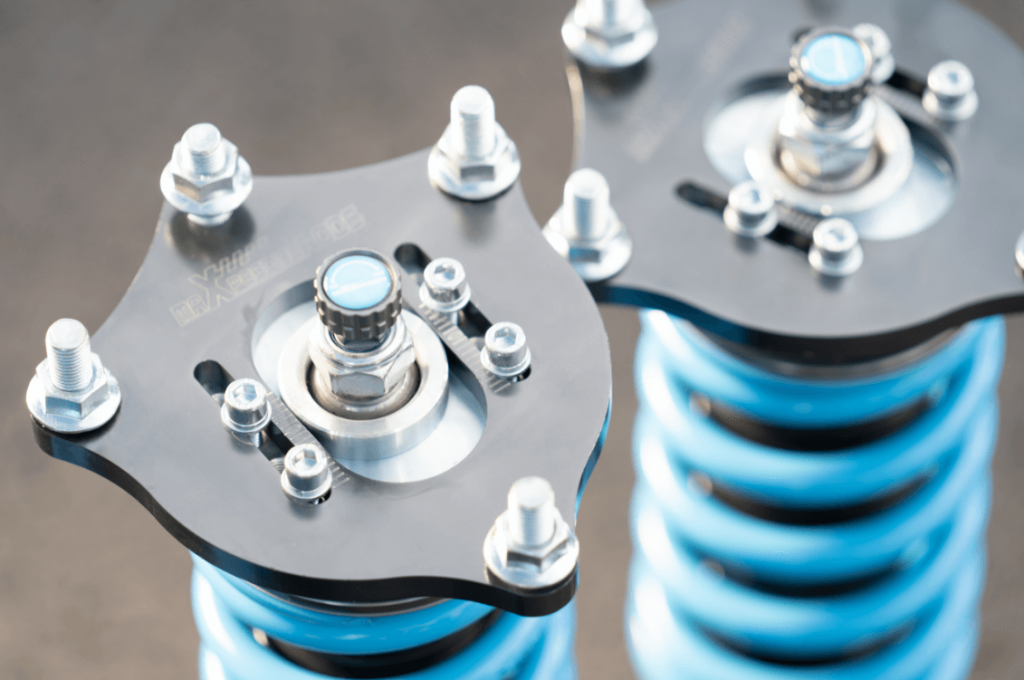
Additionally, some coilovers forgot the inclusion of upper-mounts altogether, and instead, you just re-use the upper mounts your stock suspension uses. Because the stock suspension uses a large, rubber spring seat, this will almost always offer the smoothest ride but is not always the best choice for performance.
Helper Springs
Coilovers are generally all adjusted the same way. You loosen the lock collars at either end and twist the main threaded shock body (sometimes called the “cartridge”). Twisting the shock body effectively screws it into the lower mount (called the “cup”). Screwing it further into the cup will lower the car, and unscrewing it will raise the car. If you’re looking to go extremely low, you may find that the car isn’t as low as you like once you screw the shock body into the cup.
The only way to go lower from here is to unload the spring. When you unload the spring, by spinning the spring’s lower mount around the threaded shock body, you create a condition called “droop”. This means the spring is basically loose; you can physically jiggle it around. But when you set the car on the ground, the shock compresses and sits on the spring-like normal, and the result is that the car is now lower.
Droop can be a dangerous condition, however. If you hit a large bump, the spring can free-float between the upper and lower mounts while the coilover is unloaded, and there’s nothing forcing it to land correctly. So once the coilover compresses, the spring may land incorrectly, causing serious damage.
Helper springs are thin, light springs that are installed between the mainspring and the spring mount. They are easily compressible and exist purely to let the car go lower. Keeping helper springs in place means that even if the mainspring is unloaded during driving, the helper spring will stretch out to maintain constant tension on it, keeping it in place to ensure it will land correctly. This gives you the benefit of lowering the car more, but negates the dangerous side-effects you would otherwise get from the “droop”.
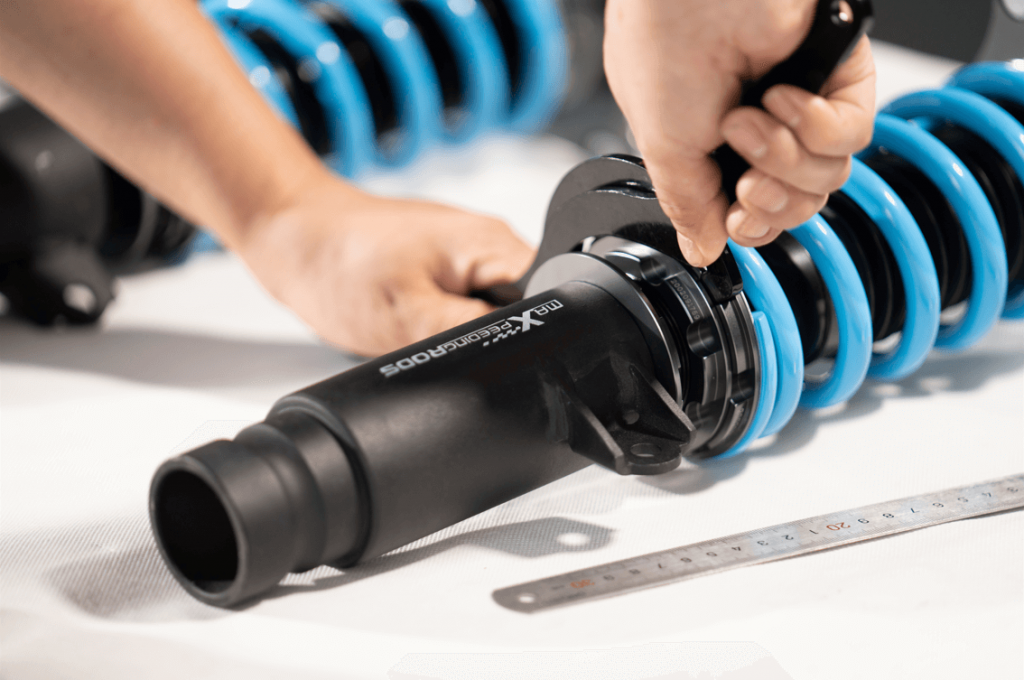
OEM-Type vs “True” Coilovers
The spring sits in a cup on a control arm, and the shock mounts to the spindle and body of the car. Many coilovers are available in both styles. Neither is truly superior to the other, though many feel a “true coilover” setup is a better choice for a car where performance is a higher priority.
This is partly because switching to a true coilover setup allows you to replace the rear control arm which otherwise houses the bulky, heavy, spring seat. There is some debate surrounding which choice is better, but it really just comes down to personal preference. MaXpeedingRods coilovers are made of high-quality materials and are carefully assembled and quality controlled to ensure proper fit and function. You can contact one of our coilover specialists at MaXpeedingRods for further assistance on how to buy a coilover.
